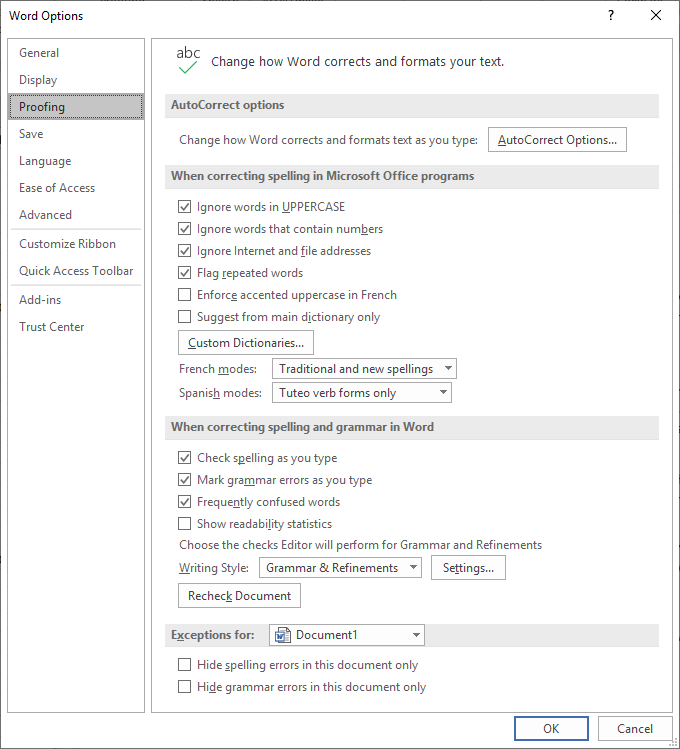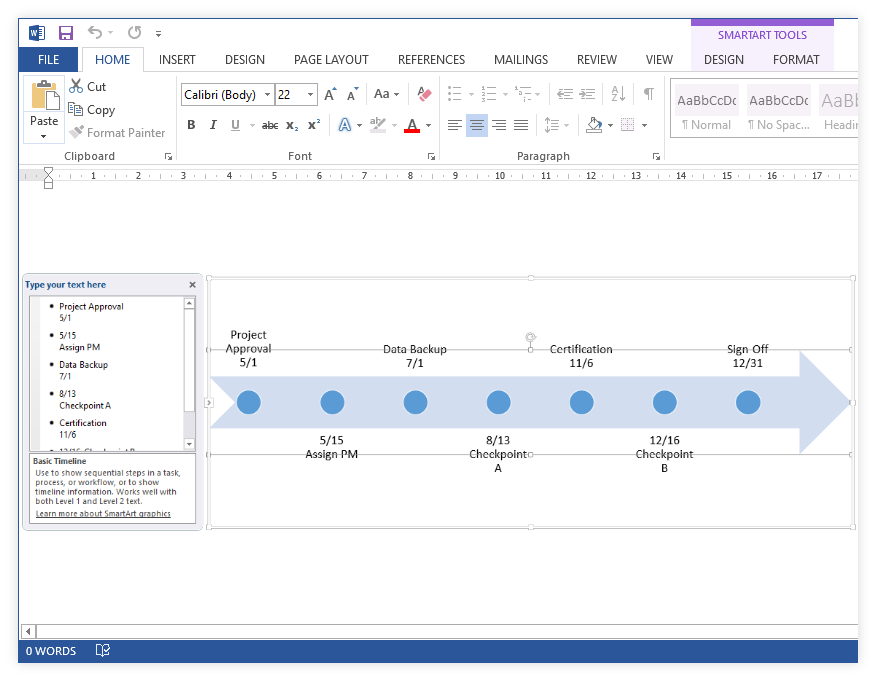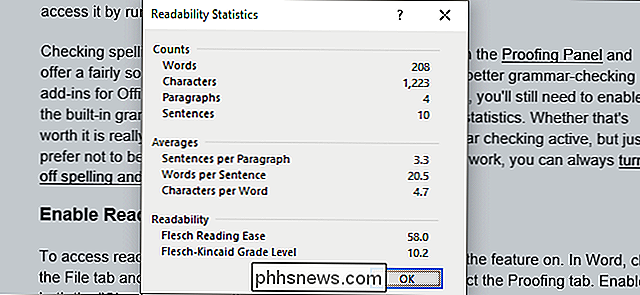
First, let’s acknowledge the elephant in the middle of this post: Many of us avoid discussing readability scores because they reflect on our writing skills and our audience’s reading ability. Frankly, no one wants to be viewed as judgmental. But, I think we should look that elephant squarely in the eye because the purpose of readability scores is not to demean or judge—the purpose is to help us communicate clearly with our audience.
Learn how to easily generate a readability report that rates the readability and grade-level of your Word documents. This is very helpful if you want to make. For a Microsoft Word 2000 version of this article, see 220296. When you use the grammar checking tool on a document that contains sentences that are written in the passive voice, the document's Readability Statistics report displays an inaccurate or zero percentage (0%) value for passive sentences in the document.
Do you want to skip to the instructions for accessing Microsoft Word’s readability statistics?Click here.
The Flesch Reading Ease and Flesch-Kincaid Grade Level Formulas
Readability tests tell us how difficult or easy a text is to read. In the United States, our primary readability tests are the Flesch Reading Ease formula and the Flesch–Kincaid Grade Level formula. Flesch Reading Ease was created by reading expert Rudolf Flesch and popularized in his 1949 book The Art of Readable Writing. The formula uses average sentence lengths and average syllable counts to produce a score between 0 and 100, with higher scores having lower levels of complexity. Notice that the scores differ for children and adults:1
| Score | Readability | Child/Teen Reading Level | Adult Reading Level |
| 90 – 100 | Very Easy | 5th grade | 4th grade |
| 80 – 90 | Easy | 6th grade | 5th grade |
| 70 – 80 | Fairly Easy | 7th grade | 6th grade |
| 60 – 70 | Standard | 8th and 9th grade | 7th or 8th grade |
| 50 – 60 | Fairly Difficult | 10th to 12th grade | Some high school |
| 30 – 50 | Difficult | College students | High school graduate or some college |
| 0 – 30 | Very Difficult | College graduates | College graduates |
In 1975, scientist J. Peter Kincaid created the Flesch-Kincaid Grade Level formula for the U.S. Navy. It converts Flesch Reading Ease scores into grade-based scores.2 Here are a few examples:

- 0 to 1 equals preschool to first grade.
- 6 to 7 equals sixth to seventh grade.
- 11 to 12 equals the junior to senior year in high school.
- 13 and above equals the collegiate level and beyond.
The Flesch-Kincaid Grade Level formula has since become a standard for the United States Department of Defense and other government agencies.3

Do you want to skip to the conclusion?Click here.
Accessing Readability Statistics in Microsoft Word
Microsoft Word has a built-in function that provides Flesch Reading Ease and Flesch-Kincaid Grade Level scores. The following instructions apply to Word for Office 365, Word 2019, Word 2016, and Word 2013. However, the steps are similar for Word 2010 and 2007.

Turn on the readability statistics function:
1. Select File in the toolbar.
2. Select Options on the left-hand side of the Backstage view.
3. Select Proofing in the Word Options window.
4. Check Show readability statistics.
5. Select Recheck document if the document is already in progress. (This step isn’t necessary for blank documents.)
6. Select OK to save your changes.
Access the readability statistics:
1. Select Review in the toolbar.
2. Select Spelling & Grammar. (Note that Word for Office 365 and Word 2019 say Check Document instead of Spelling & Grammar.)
3. Complete the Grammar Check if it has not already been completed.
Microsoft Word Readability Stats
4. Review your scores at the bottom of the Readability Statistics window. (This window won’t appear until the Grammar Check has been completed.)
Applying Readability Scores to Your Content
How should we apply readability scores to our own content? Truth be told, there is no right or wrong answer because everyone’s audience is different. Microsoft Word recommends keeping general content between the seventh and eighth-grade level.4 Oregon’s Department of Administrative Services requires that most of its material be written at the tenth-grade level.3 And, consumer insurance forms in Texas must have a Flesch Reading Ease of 40 or higher, which is appropriate for high school graduates.5
But comprehension is based on more than sentence length and syllable counts. Subject matter, content structure, and our own cultural knowledge all influence our understanding of what we read. So, instead of sticking to one specific number, consider using readability scores as guideposts that can help you create clear content that meets your audience’s unique needs.
I’d love to hear if your business has a readability policy based on a Flesch-Kincaid Grade Level, Flesch Reading Ease, or another formula.
(In case you’re wondering, this post’s Flesch Reading Ease score is 53.5 and its Flesch-Kincaid Grade Level is 9.0.)
_________________
1. Rudolf Flesch, The Art of Readable Writing (New York: Harper & Row, 1949), 149-50.
2. “Flesch–Kincaid readability tests,” Wikipedia, last modified February 28, 2014, http://en.wikipedia.org/wiki/Flesch%E2%80%93Kincaid_readability_tests.
3. “Readability – Frequently Asked Questions,” Oregon.gov, accessed March 13, 2014, http://www.oregon.gov/DAS/pages/readability.aspx.
4. “Test your document’s readability,” Office.com, accessed March 13, 2014, http://office.microsoft.com/en-us/word-help/test-your-document-s-readability-HP010354286.aspx.
Microsoft Word Readability Tool
5. “Adoption of Flesch Reading Ease Test,” TDI.Texas.gov, accessed March 13, 2014, http://www.tdi.texas.gov/pubs/pc/pccpfaq.html.